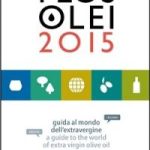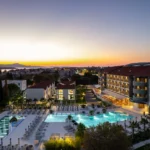When I first moved to Dalmatia back in 2003, there was a joke among the few expats already there about the local food.
“Did you know,” they would ask, “that there is a factory in Croatia which makes the menus for every restaurant in the country?”
“Really?” I responded, unaware that they were not being serious.
“Yes, that’s correct. They print the same menu for everyone. All the restaurant has to do is write in the restaurant name and add their own prices.”
I laughed, but the joke DID have an element of truth to it. As gorgeous as Hvar was back in 2003, once you had sampled the menu of one restaurant, you had pretty much sampled it all. Cevapi, mixed grill, octopus salad, grilled squid & pizza.
Back then, every restaurant seemed to offer the same cheap table wine, Faros red or Faros white by the litre bottle. It was drinkable but nothing more.
It was years before I learned that Hvar was an incredible island of wine with exceptional quality.
What confused me about the gourmet scene back then was the food I had outside the restaurants was of EXCEPTIONAL quality. My punica (mother-in-law) and wife were legends in the kitchen, but it was the quality of food that came from the family field which had me equally impressed. Coming from Manchester, where water tomatoes are available 24/7 (at least until Brexit…), 12 months a year, the sheer intensity of the tastes of these Hvar fruits and vegetables was a revelation.
As was the knowledge that they were only available at certain times of the year, and in certain regions.
I came to long for the asparagus season in March (if you have never tasted wild Croatian asparagus, you really must) and the mandarins of November, for example. I was tutored in the Balkan culture of Moving Vegetables. No trip in the region could be performed without sending fresh produce from the family field to relatives elsewhere. 20 kilos of lemons from Jelsa to Belgrade, with the corresponding weight of red peppers on the return journey. Olive oil from Jelsa to Varazdin, pumpkin oil sent back. And most bizarrely to this vegetable-deficient Manchester city boy, 30 cabbages from Jelsa to Zagreb at one time of the year, 30 very different cabbages from Zagreb to Jelsa a few months later.
But the restaurant scene to the casual tourist? Beyond disappointing.
And then things started to change.
Anthony Bourdain’s stunning look at Croatian cuisine back in 2011 blew my mind. It also blew his as he called anyone who was unaware of the phenomenal Croatian cuisine – including himself – a f@cking idiot. Bourdain unveiled a cuisine that included in his words “world-class wine, world-class food, world-class cheese.”
Things started to change, not necessarily as a direct result of Bourdain, although it had an influence. More international cuisine options became available, and not just in Zagreb. There was a lot more experimentation, both of traditional recipes, and with fusion dishes.
The international gourmet media began to take notice, and the first mentions in the Michelin Guide – and then the first Michelin Stars – were awarded. The 2021 Michelin Awards this week saw no less than 10 Croatian restaurants with a Michelin Star, and a total of 68 restaurants in the prestigious Michelin Guide.
The best Croatian food – to me at least – has always been based on simple recipes, passed down by grandmothers, using the freshest local produce depending on the season. Add to that the creative flair of an innovative chef or a gourmand with an eye for detail and a fresh perspective, and the results can be spectacular.
And if you have the creative flair of an innovative Croatian chef AND an international gourmand, with a very simple concept for Croatian cuisine which has not been properly done before, then things get rather interesting.
One of the more colourful expats in Zagreb is an Egyptian-Algerian entrepreneur called Adel EL Miniawy. With an impressive background in hospitality, including four years at the prestigious Swiss Hotel Management School in Caux, Adel moved to Zagreb in 2016 to start his hospitality business in Croatia, the first phase of which was Doma Zagreb Aparthotel in the city centre. Seven 4-star serviced apartments (with a Booking.com rating of 9.8) will soon have access to additional services, including bar, co-working space and dining area. Doma Zagreb Aparthotel has been catering to tourists and business travellers since it opened, as well as being the accommodation partner for the ongoing Zagreb Digital Nomad Ambassador project.
As with many foreigners living in Croatia, the fresh perspective, international experience and foreign eye highlight untapped potential in Croatian tourism. Over a glass or three of Grk last year, Adel told me about a simple Croatian gourmet concept that had not been done before, but that would be a total hit. A concept he was determined to bring to the market, if only he could find the right chef to buy into the concept.
The concept will be announced shortly, but I was amazed to see that such a simple – and central – part of Croatian gastronomy was indeed being overlooked. A concept that the right chef could bring a new and delicious focus to Croatian cuisine.
And then Adel found his chef, 30-year-old Mario Mandaric, whose culinary journey has been quite extraordinary. From dropping out of school in Omis at the age of 17 to making the Forbes list of 30 most influential under 30-year-olds just 12 years later, while cooking in a Michelin 3-star restaurant, the Fat Duck. You can read more about Mario here.
Mario thought this simple concept for Croatian cuisine by this crazy Egyptian was genius, and one with a lot of potential, and a story in which he wanted to play his part. After months of messaging, the two finally met last week for the first time, and I met them for a drink a little later.
It was a pleasure to watch two consummate professionals with completely different backgrounds approaching this simple concept with such passion and enthusiasm.
Mario’s knowledge of the details of things related to Croatian food was staggering. He worked on my adopted island of Hvar this summer and told m a story I had never heard before, despite having written more than 9,000 articles about that beautiful island. Some 200 years ago, there was a potato famine on Hvar (and I assume elsewhere). The price of potatoes rose to insane prices, even higher than gold at one point. Locals would take their gold on the boat to Split and return with precious potatoes.
Until one day… a local lady discovered a way to make gnocchi without potatoes. And the crisis was over.
Final details are being put to the new gourmet concept for Croatian cuisine, which will be launched in Zagreb early next year. It is a story we will be featuring a lot on TCN, and we looking forward to it being a delicious and educational journey for us and our readers.











